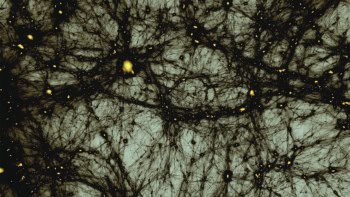
So what is the site about?
Hogg’s Research: Galaxies, Stellar Dynamics, Exoplanets, and Fundamental Astronomy, as the name suggests, is a blog all about astronomy, astrophysics and cosmology. Written by astrophysicist David W Hogg, the blog can best be thought of as his research diary. Hogg has some interesting rules that he has set for himself – that he must blog five times a week, so long as he is not travelling, and that his posts are based on ongoing research, rather than other topics in academia such as teaching or refereeing. Hogg – a professor at the Center for Cosmology and Particle Physics at New York University in the US – has been writing the blog since 2005. The website hosts an impressive 200+ entries per year, all of which are tagged. This makes it easier to jump to older posts on a topic – a useful feature on a blog with such a large archive of posts.
Apart from this website, Hogg, a veteran blogger, also writes four other blogs that cover everything from teaching to DIY to cooking. These blogs are much less frequently updated, with just a few entries every year. The most interesting of these is Hogg’s Ideas, which is a repository of scientific ideas that are “free to use by anyone” – an intriguing concept, though it remains unclear how many of these, if any, have come to fruition.
What are some of the topics covered?
Hogg’s research interests, as well as those of his group, centre on observational cosmology. As previously mentioned, the blog covers work as it is being done so many posts are short and quick with the latest update on, say, binary star systems or spectroscopy or black holes. In fact, almost every celestial object that you can think of has a few entries on the blog. Another theme that is regularly mentioned is statistics and big data – a topical subject in astronomy and cosmology today. But Hogg also reports on the many meetings, discussions, conferences and talks he attends, giving the reader a quick update on all the various studies and ideas in the community. This is probably one of the best parts of the blog – Hogg has many colleagues with whom he is in constant conversation, which he happily shares with the reader.
Who is it aimed at?
Thanks to the wide variety of posts each week, Hogg’s Research may be of interest to the discerning scientist with a keen interest in astronomy and cosmology. But at its heart, this is a blog for the community itself. Many of the posts are short and fairly technical and Hogg quite happily uses acronyms that non-astronomers may struggle with. Also, he regularly writes about ongoing research done by people in the field, but without much background or context, which make it quite hard for an outsider to keep up. Still, this is the very thing that makes the blog interesting – it’s a bit like walking into a lecture and not quite understanding the minutiae of what is being discussed, but still being interested in the conversation at large.
Can you give me a sample quote?
From a post published in April 2017, titled “Direct detection of the cosmic neutrino background”: “Today was an all-day meeting at the Flatiron Institute on neutrinos in cosmology and large-scale structure, organized by Francisco Villaescusa-Navarro (Flatiron). I wasn’t able to be at the whole meeting, but two important things I learned in the part I saw are the following: Chris Tully (Princeton) astonished me by showing his real, funded attempt to actually directly detect the thermal neutrinos from the Big Bang. That is audacious. He has a very simple design, based on capture of electron neutrinos by tritium that has been very loosely bound to a graphene substrate. Details of the experiment include absolutely enormous surface areas of graphene, and also very clever focusing (in a phase-space sense) of the liberated electrons. I’m not worthy! Raúl Jiménez (Barcelona) spoke about (among other things) a statistical argument for a normal (rather than inverted) hierarchy for neutrino masses. His argument depends on putting priors over neutrino masses and then computing a Bayes factor. This argument made the audience suspicious, and he got some heat during and after his talk.”
- Enjoy the rest of the June 2017 issue of Physics World in our digital magazine or via the Physics World app for any iOS or Android smartphone or tablet. Membership of the Institute of Physics required



